Putting down roots in a car market works wonders.
Those who have done it are fully convinced that if you build cars in the UK you will make more many selling them here than the rivals who don’t.
BMW spends a lot of time and money showing itself to be a good corporate citizen in a whole variety of ways.
A very visible part of that strategy will arise next year when BMW is the official provider of cars to the Olympic athletes, shuttling them from hotel to practice areas and to the stadium.
Honda also likes to big up its British credentials which are substantial. And it too has seen benefits – very considerable benefits at present.
The Japan earthquake has crippled parent company production factories and Honda UK is limping along on a wing and a prayer.
Added to that is the unnerving position of being at a barren point in the new model programme.
The two things together make for a very nasty bind.
But the senior people are sure of one thing: if they had not built a tangible British presence and solid citizenship credentials, its plight today would be a whole lot worse.
BMW and Honda are two of the 40 main brands selling in the UK, of which 14 are now also manufactured here.
This month BMW announced it was going to up its game.
It is to invest another £500 million in its UK production network over the next three years. The news was given first and in private to Prime Minister David Cameron at Downing Street by Norbert Reithofer, the BMW chairman on June 9.
BMW has a good track record in pulling Prime Ministers. Last time it announced investment in Mini Oxford, Reithofer had Gordon Brown in tow.
Audi may have got the British royal family tied up as personal users of its cars, but BMW has got the political savvy.
There are new Minis coming – a coupé and the roadster – which is what has sparked the £500m flood of cash into Oxford.
There is money also for the pressings plant in Swindon and the engine plant at Hams Hall near Coleshill in Birmingham – which happens also to be the headquarters of International Motors Group which is currently laying plans to import Great Wall, the first of the big Chinese brands.
Hams Hall set a new annual production record last year making 385,000 four cylinder engines which go into the smaller BMWs as well as the Mini.
BMW has been a safe pair of hands in rescuing and reviving the Mini brand.
This is year 10 of its ownership and in that time two million cars have been produced and three-quarters exported to 90 different countries.
BMW likes to make cars in its principal sales territories and has factories in Germany, the US and China. But it seems unlikely that Mini marketing will follow the BMW parent pattern.
The brand builders insist that Mini thrives on its “Britishness” and that to move it to satellite production plants would be ruinous.
The same goes for Rolls-Royce which nestles comfortably in its rural retreat on land owned by Lord March. There is no German swagger here.
Visitors who rock up to specify the special shade of pink for the Ghost get no reminders at all that the company has lost its claim to British nationality. It’s all very well done.
There are 18,000 people making money out of Mini manufacturing and sales – just enough to fill the St Helens rugby stadium.
That number includes all the people in the BMW and Mini dealer networks. Later this year, if all goes to plan, the stats department at BMW HQ will whack out a press release telling us that the two millionth Mini has just been built.
But there is rather more to do than just counting current production cars in the BMW/Mini plan. There is a new platform coming that will be used for front and four-wheel drive applications.
For that platform for the first time there is to be a BMW 1 Series body as well as a Mini. In other words, BMW is to use what it has learned from Mini about FWD cars and apply that to a whole new world of small BMWs.
Mini is also going rallying and not just in a small way. It has signed up for the World Rally Championship which is a seriously big deal. It’s very expensive, obviously, for a comparatively small brand and high risk.
The Monte Carlo Rally triumphs in the early 60s are still etched on the memory of everyone who knows anything at all about the brand and there are grandfathers around today who were just lads clinging to mountainsides to first hear, and then see, a Mini hurtle by.
BMW knows full well that it cannot make a token effort at rallying and then fail.
The British would advance on Cowley with bayonets fixed. And grandfathers would leave the Mini prospects list in droves.
UK plant helps foster Honda's strong relationship with dealers
“The strength of the relationship with our dealers is good,” says an insider at Honda rather cautiously; and then: “That cannot last for ever.”
It’s all a bit of a sticky mess. The products are ageing rather badly and the new stuff, that was due to ride to the rescue by now, is held up by components shortage.
The earthquake that caused so many deaths and caused so much infrastructure damage is still wreaking havoc.
Because there is a factory in the UK, dealers and OEM have had a strong relationship. One of the directors told AM: “It helps enormously. When we take dealers there for a car launch they never cease to be impressed by the scale of the commitment.”
Honda chooses its staff extremely carefully. Recruiters look for the “can-do” attitude. So when dealers or customers visit the factory they are always encouraged to mix and to talk with the factory floor personnel.
Visitors come away from Swindon with a very strong sense that responsibility pervades all corners of the plant. As a result they have been very sympathetic about the tsunami disaster.
Sympathy dissipates a little when people consider the economics. But the prejudice is usually misconceived.
“It is always assumed that the profit from the UK factory goes straight back to Tokyo. But it doesn’t and never has. All the profit made here stays here.”
Swindon is building Civic, CR-V and Jazz. Production will be 125,000 this year which is way down on last year.
About 65% is for the UK. Civic is by far the most important name-plate, but the age of the car is now against it.
The replacement has been delayed too long, but it will be shown at Frankfurt and in UK dealerships in December.
The plant made 340,000 cars last year.
The run rate has dropped by half so far this year and the expectation is that total output will be down at 122,000. There will be a long summer shutdown in August.
Two years ago, Honda got its first feel for falling demand and the financial effects of that. It got out of Formula One as a first response. Then it shut the factory.
“We got through that and mercifully the workforce stuck with us. Hopefully we can keep things going this time, but we have cut our budgets and drawn in our horns across the world.”
Delivery times are very flakey and a big-turn-off for prospective buyers. The norm used to be four to six weeks. It is now running at 16-18 weeks and the goodwill of the dealers has become vital.
Luckily, a large part of Honda’s UK volume goes through the large retail groups but even they are getting jumpy as they have to explain underperformance to shareholders.
One thing Honda does which is very wise is to thoroughly discriminate between the specs of US, Japanese and European Civics. The US has a sedan that would not suit European needs.
The dealers are very proud of the fact that “their” car is specific to Europe and built in Britain. The rest of Europe also gets a small amount of supply from a CKD plant in Turkey.
It is clear that Honda needs better product and fast. The product renewal cycle is far broader and faster from its rival makers.

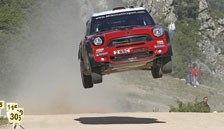
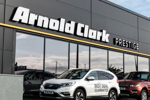



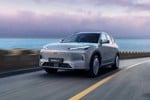


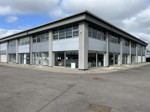
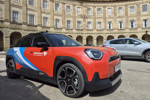
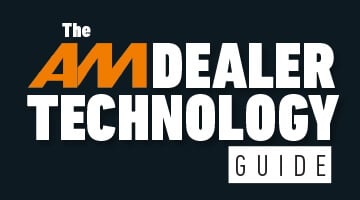


Login to comment
Comments
No comments have been made yet.